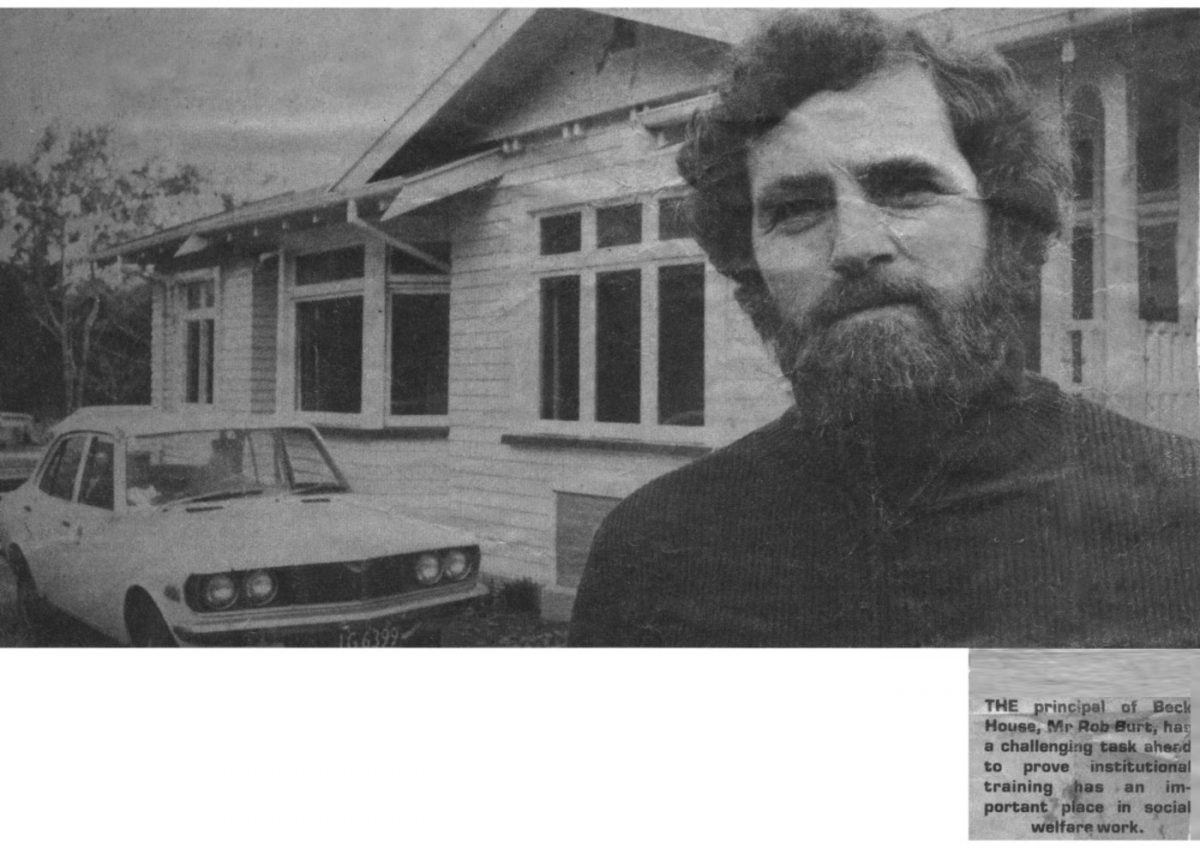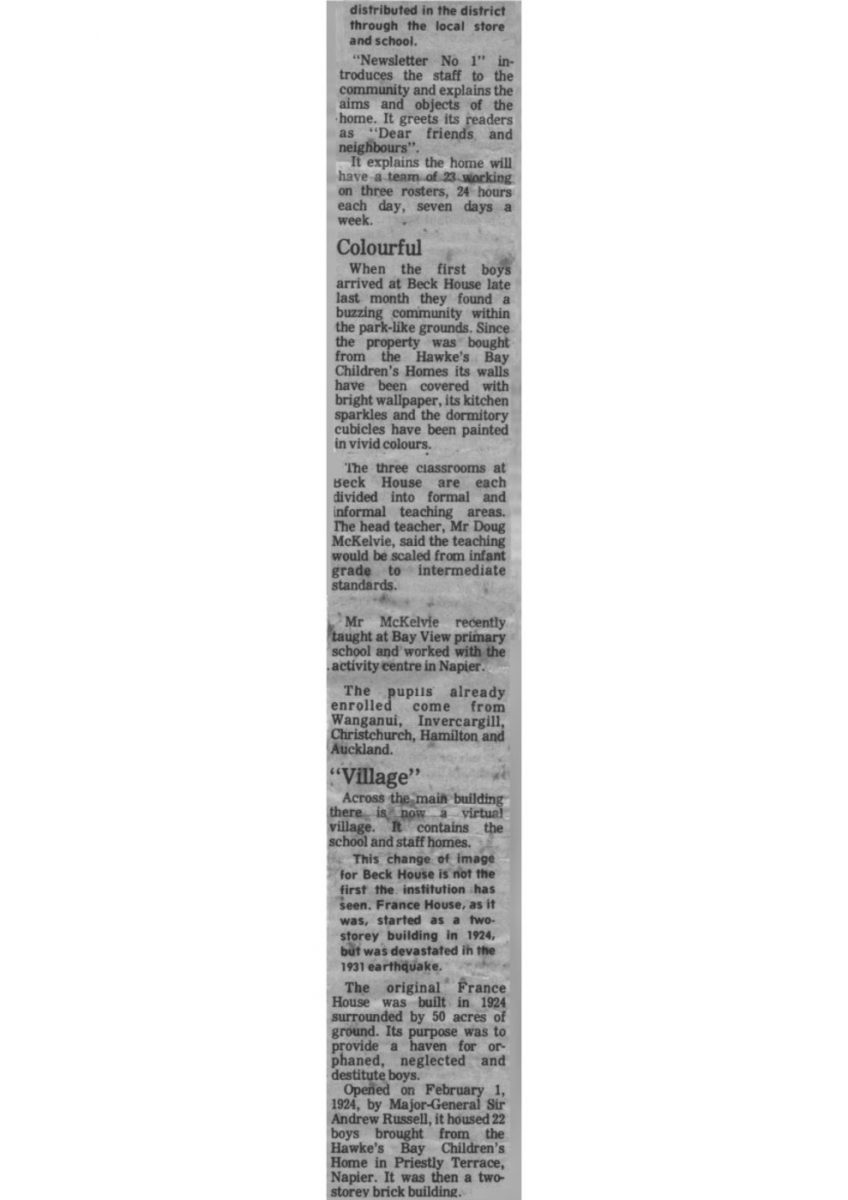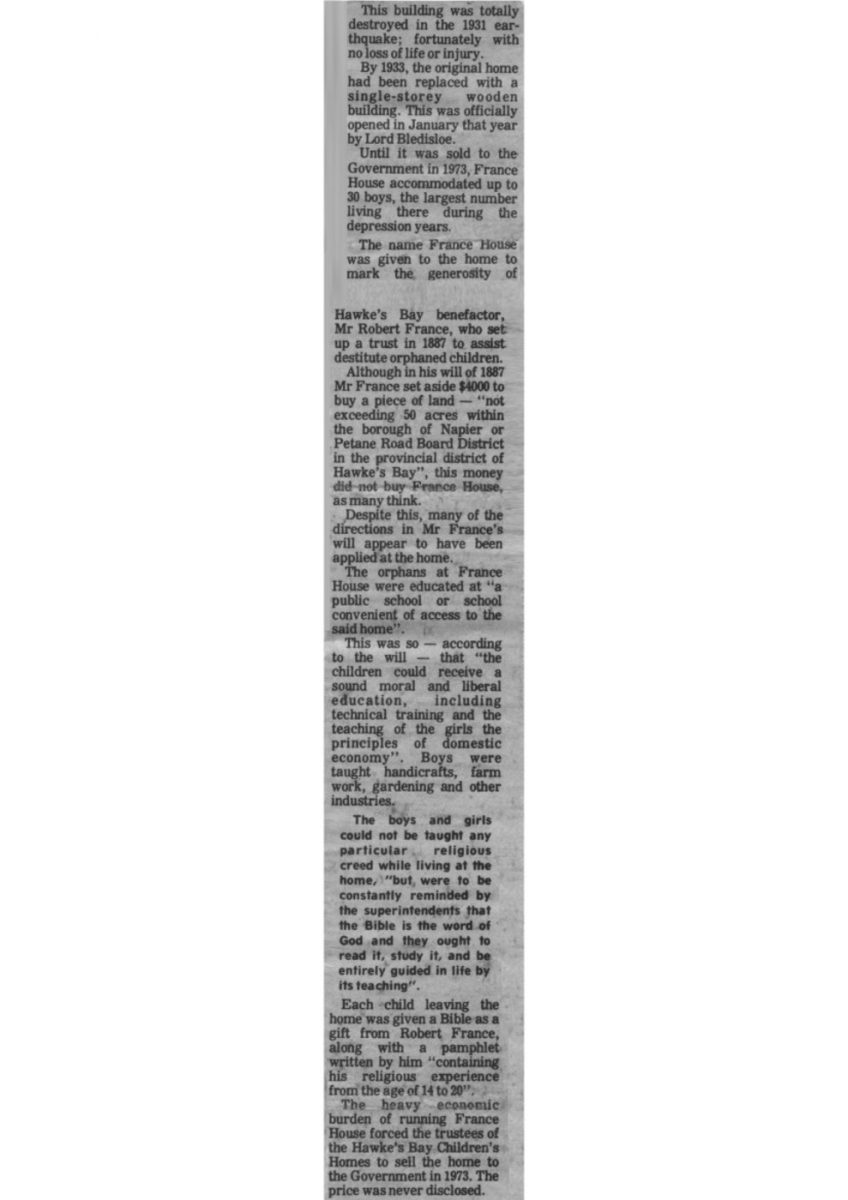This building was totally destroyed in the 1931 earthquake; fortunately with no loss of life or injury.
By 1933, the original home had been replaced with a single-storey wooden building. This was officially opened in January that year by Lord Bledisloe.
Until it was sold to the government in 1973, France House accommodated up to 30 boys, the largest number living there during the depression years.
The name France House was given to the home to mark the generosity of Hawke’s Bay benefactor, Robert France, who set up a trust in 1887 to assist destitute orphaned children.
Although in his will of 1887 Mr France set aside $4000 to buy a piece of land – “not exceeding 50 acres within the boundary of Napier or Petane Road Board District in the provincial district of Hawkes Bay: this money did not buy France House as many might think.
Despite this, many of the directions in Mr France’s will appear to have been applied at the home.
“The orphans at France House were educated at “a public school or school convenient of access to the said home”.
This was so – according to the will – that the children could receive a sound moral and liberal education, including technical training and the teaching of the girls the principles of domestic economy”. Boys were taught handcrafts, farm work, gardening and other industries.
The boys and girls could not be taught any particular religious creed while living at the home, “but were to be constantly reminded by the superintendents that the Bible is the word of God and they ought to read it, study it, and be entirely guided by life in its teaching”.
Each child leaving the home was given a Bible as a gift from Robert France, along with a pamphlet written by him “containing his religious experience from the age of 14 to 20”.
The heavy economic burden of running France House forced the trustees of the Hawke’s Bay Children’s Homes to sell the home to the Government in 1973. The price was never disclosed.
















Do you know something about this record?
Please note we cannot verify the accuracy of any information posted by the community.